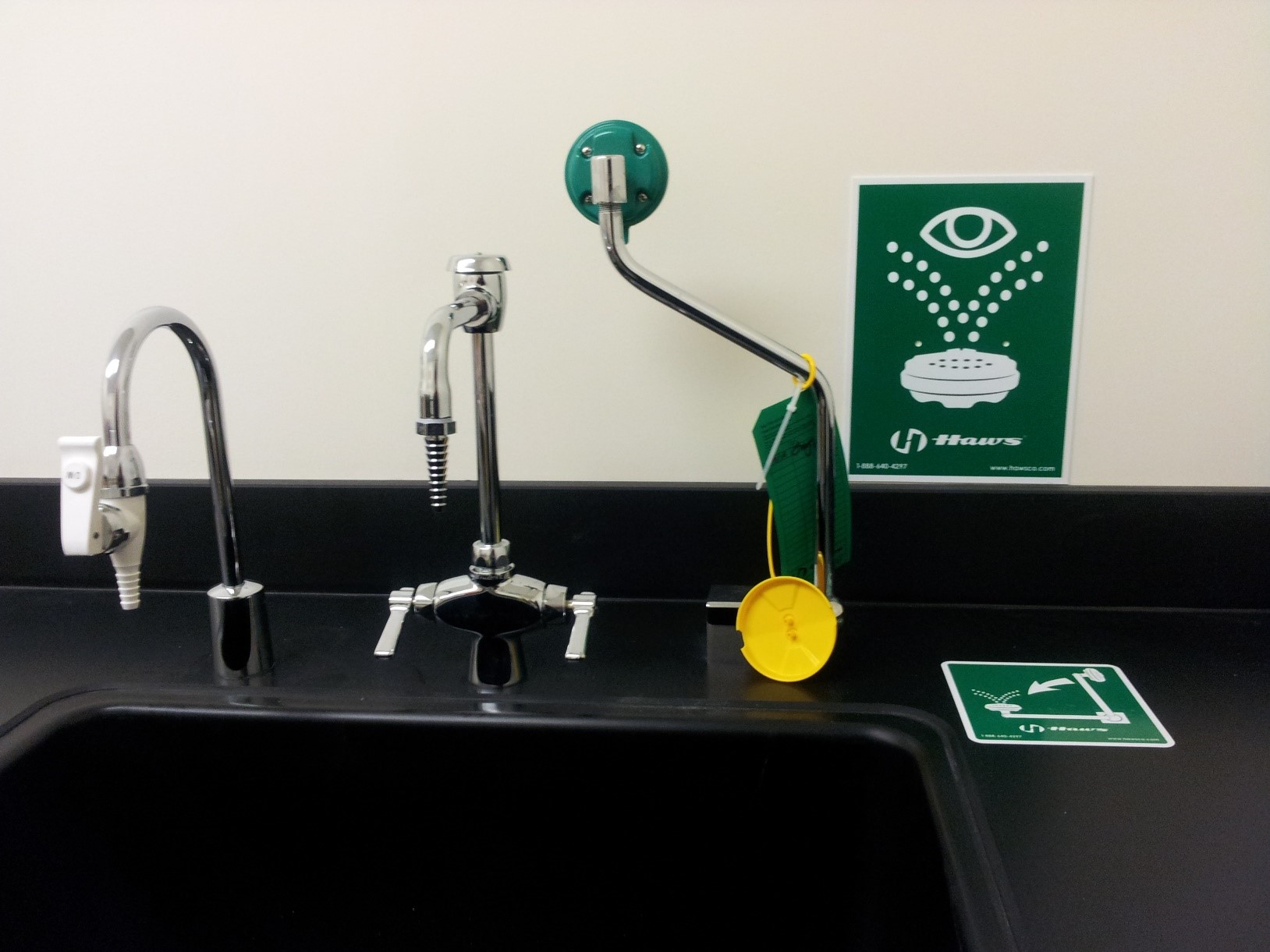Lead Safety in Shops and Labs Focus Sheet
Lead
Updated March 1, 2024
Lead is a malleable, blue-gray, heavy metal that occurs naturally in the environment. Lead is found in many forms and can be hazardous when inhaled as a dust or fume, or accidentally ingested after contact directly or with contaminated surfaces.
While inorganic lead does not readily enter the body through the skin, it can enter the body through accidental ingestion (eating, drinking, and smoking) via contaminated hands, clothing, and surfaces.
Emergency Washing Equipment

Updated October 3, 2024
Emergency washing equipment is provided in University facilities for the purpose of removing hazardous materials from the eyes and skin in the case of an exposure. Examples of emergency washing equipment are listed below.
Polychlorinated biphenyls (PCBs)
Updated April 16, 2024
Polychlorinated biphenyls (PCBs) are toxic, persistent manmade chemicals that were widely used as an oil additive in electrical equipment and as a plasticizer in building materials. Congress banned the manufacture and use of PCBs in 1978.
Safety Data Sheet Template
Use a Safety Data Sheet Template (Word) if synthesizing a hazardous chemical. The PI or manager must generate a Globally Harmonized System (GHS) compliant label and safety data sheet (SDS) before shipping or transporting the chemical away from the campus.
Specific Chemical Hazards
Chemicals are used in laboratories, maker spaces, shops and other areas across campus. EH&S provides information and guidance on safe practices for handling, storing, transporting and disposing of hazardous chemicals.
Download secondary chemical container labels
Many laboratories use hazardous chemicals that are purchased in large quantities and then transferred into smaller secondary containers (e.g., vials, flasks or bottles), or prepared as diluted solutions or mixtures for use.
If your laboratory uses secondary containers filled with chemicals, the secondary containers must comply with OSHA’s Hazard Communication Standard for Labels and Pictograms.
Liquid Nitrogen and Alarms in University Research Space
This report is intended to provide guidance on identifying and evaluating potential risks related to storage of liquid nitrogen in laboratory space, and how to best mitigate those risks at the University of Washington. This paper provides an analysis of the available literature on the subject, example calculations of risk, and suggestions of best practices to detect an unsafe environment from liquid nitrogen and other cryogenic material spills and releases in rooms and spaces.
Secondary Chemical Label 3
Secondary chemical container labels allow the user to identify chemical composition and mixtures while indicating hazards.